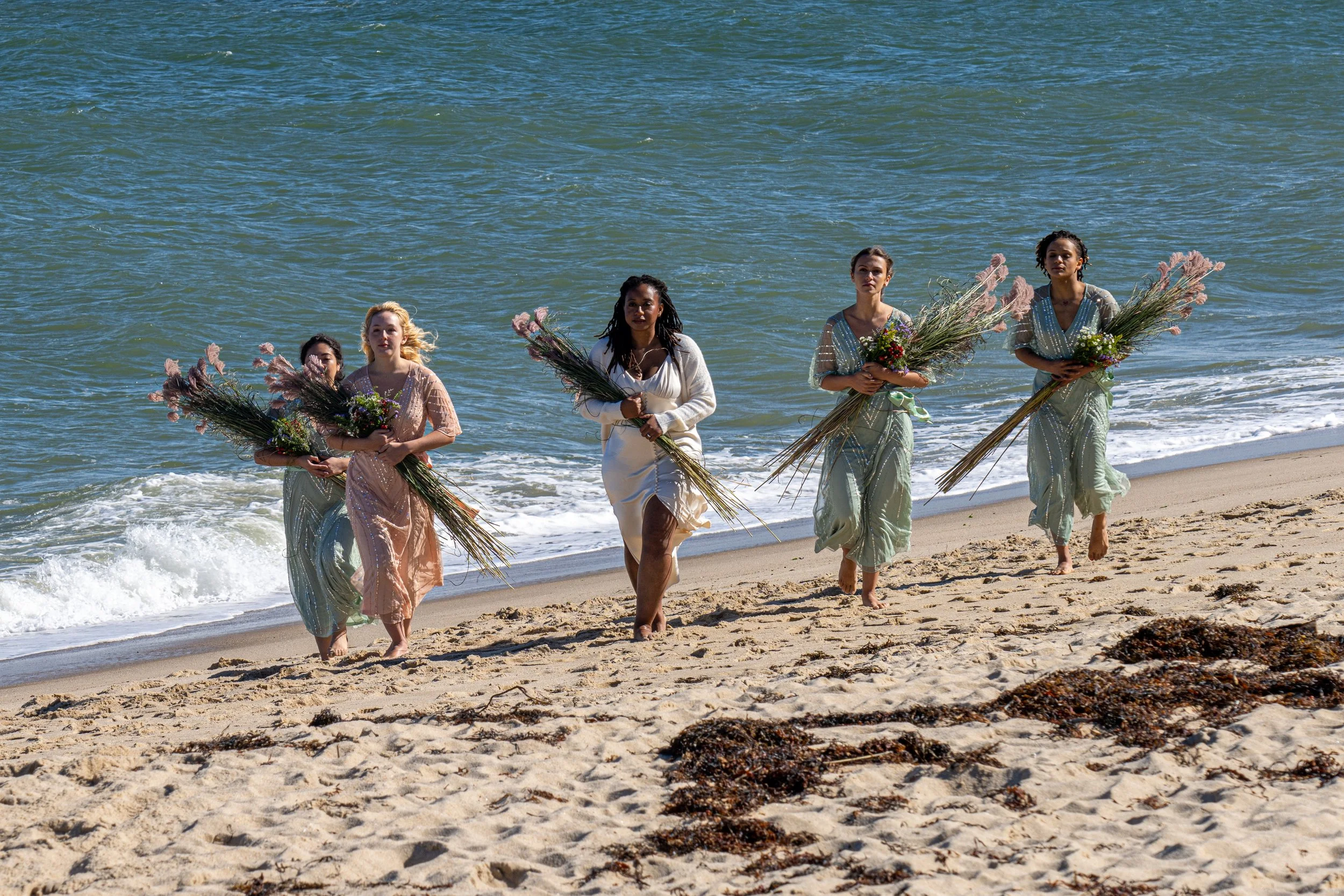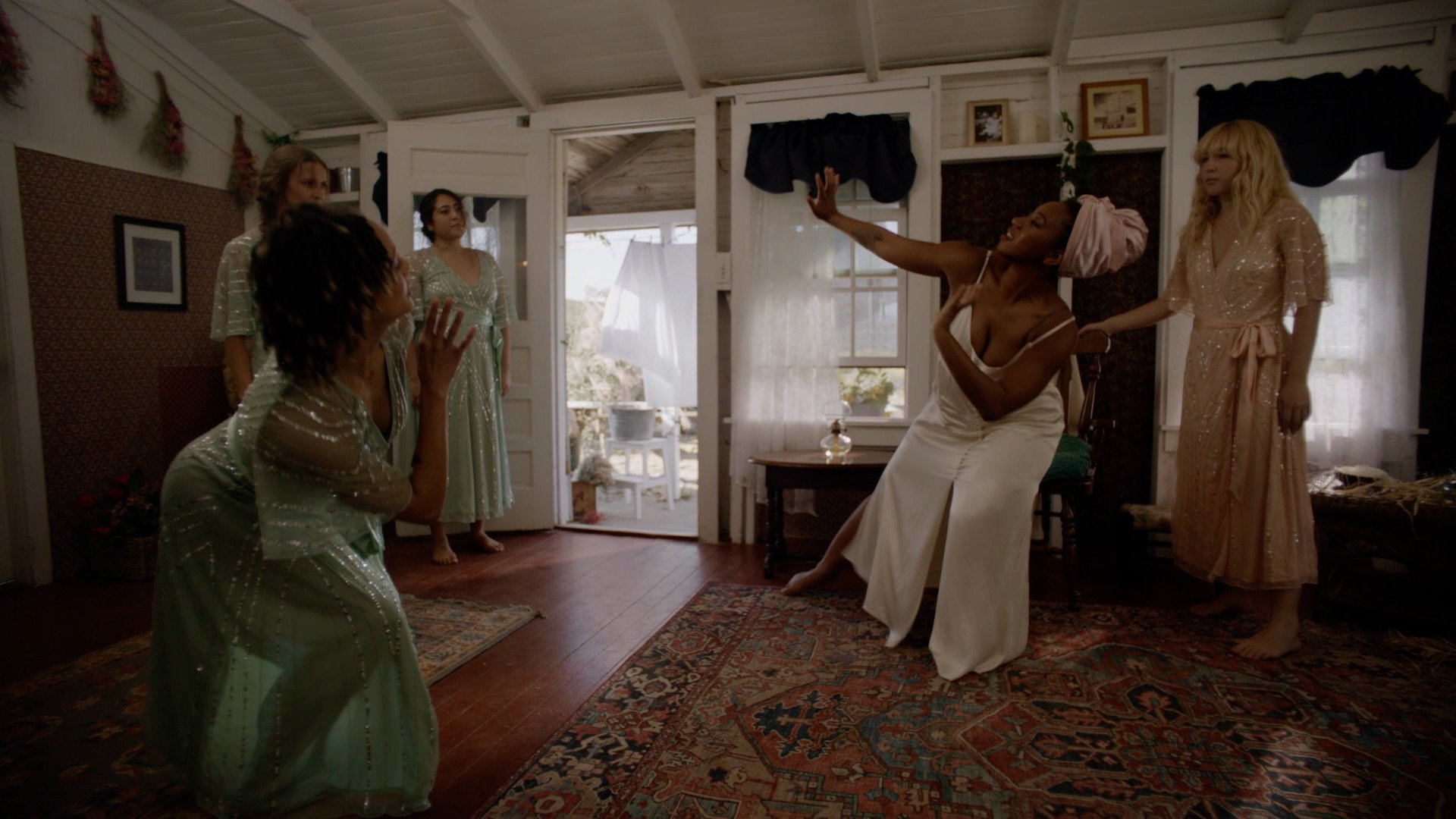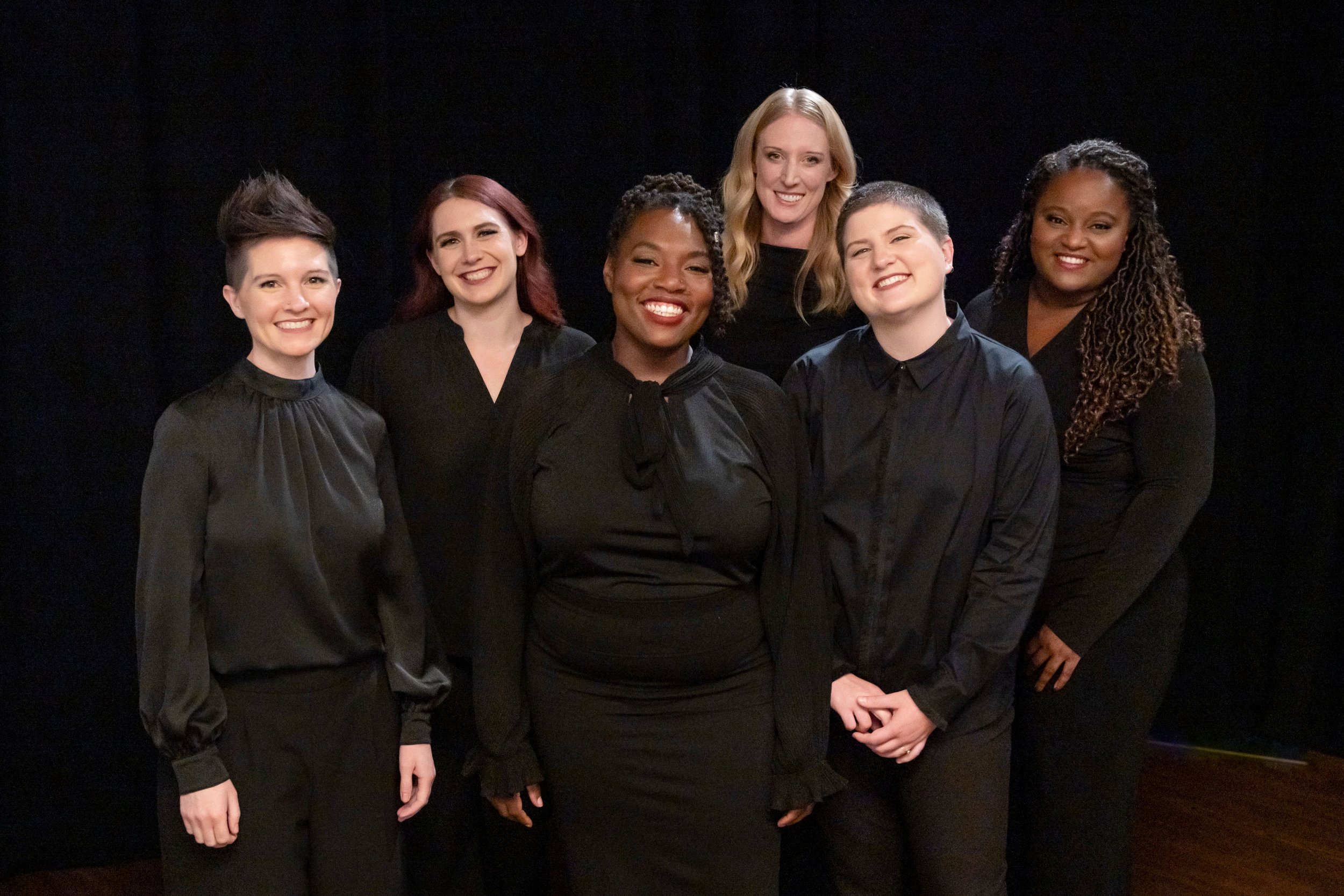Svadba (2011) by Ana Sokolović, who composed the music and wrote the libretto, is an opera. Opera Philadelphia Channel’s Svadba is a film version produced by Boston Lyric Opera and co-produced by Opera Philadelphia. It is an original film version, not a video of an on-stage production. The U.S. premiere of the opera was staged by Opera Philadelphia in 2013, OP’s first performance at FringeArts, and received critical acclaim.
Svadba means wedding in Serbian, and the story of this wedding takes place on the day/evening before the wedding and the day of the ceremony, a period of time when the bride and her attendants make preparations, a time when the realization of the impending changes in relationships takes hold, a time “filled with private and ancient rituals”. Characters include the bride, her four closest friends, and a female elder of the family, perhaps her mother. The cast, composer, and director of this “story” are all female; perhaps “experience” is a better word. It’s a common story/experience. About two million marriages occur each year in the U.S. alone. But the experience in the opera is thoroughly female, told by female performers and creative staff.
Dancers on the beach in the film version of Svadba are (L-R) Sarah Pacheco, Sasha Peterson, Victoria Awkward, Emily Jerant-Hendrickson, and Jay Breen. Photo by David Angus; courtesy of Opera Philadelphia.
Film makes available options not possible for on stage productions. In this case, seven actors portraying the characters dance on the beach and inside a beach cottage beside the Atlantic Ocean; they provide the action but do not sing. Six singers in a studio provide a capella singing with only limited accents by percussion instruments for accompaniment, including the wind off the ocean; there is infrequent use of an ocarina (a small flute like instrument) but no orchestra. In the film, the camera switches between scenes showing the actors and scenes showing the singers. Though the actors are paired with a reciprocal singer, I found it challenging to connect the names of the actor/dancers with their roles, same for the singers, except for the bride Milica, played brilliantly by Victoria Lynn Awkward and sung brilliantly by Chambrelle Williams. I can understand separating the singing from the filming to get better acoustics and avoid extraneous sounds on the set, but I find it difficult to believe that singing with the precision required for this work can be done on stage with dancers/actors performing their movements while also being the singers.
Inside the beach side cottage, the bride and her attendants make preparations, and they dance. Photos courtesy of Boston Lyric Opera.
Svadba is a visually arresting film, rich in colors, forms, textures, and movement. The costumes and décor support the atmosphere of the film. Kudos to Lena Borovci for costume design and Ana Novočić for production design. The action takes place in a rustic beach house and on its isolated Cape Cod beach. Expressive dancing, some great dancing, abounds. The movement allows for characterization of the individuals as well as presentation of the relationships and the community experience. The elder female was played by Jackie Davis; the dancer/actor attendants are Jay Breen, Sarah Pacheco, Sasha Peterson and Emily Jerant-Hendrickson; the non-singing groom was played by Olivia Moon. Everything is beautiful; there are no off colors or flavors in the piece. It is all human. It is all ritual. It is what we do, though in this case, only if your family and friends are extraordinarily talented.
A camera crew records a scene between Victoria Awkward as the bride Milica and Jackie Davis as Lena, the elder woman. Photo by David Angus; courtesy of Boston Lyric Opera.
The music is made primarily by human voices. There is no dialog, and the libretto is written and performed in Serbian. My first viewing was without the captions in English, which allowed none of the expressive sounds made by the singers to have verbal meaning for me, and often they are sounds only. The second viewing with captions allowed me to better understand the different scenes of the performance and to appreciate its poetry – “wash your hair with… stars”. It's about acknowledging and celebrating relationships and how they will change with friends and family once mated. (Composer’s note: “The text is made up of excerpts from popular songs traditionally sung before a wedding. The songs come from several Balkan dialects and from different eras. The meaning of the texts should not be taken literally.”) In truth, I found my interest was waning in the middle of the film on viewing without the captions. Without them, for instance, I missed an important concern of the bride with the groom. But the words do not tell that much of the story; relating to the experience is critical, whereby one intuits the action.
Studio singers for Svadba include (L-R) Maggie Finegan, Hannah Ludwig, Chambrelle D. Williamson, Vera Savage, Mack Wolz, and Briana J. Robinson. Photo by Liza Voll; courtesy of Boston Lyric Opera.
The singing is striking and beautiful in its harmonics and complex rhythms. The vocal for the opening scene with the bride to be and her four friends sweeping across the beach gave me a brief flashback to the “Ride of the Valkyries”. The mixture of tonal and dissonant vocal music and rhythms, tapped out at one point by singing the Serbian alphabet, syllables without meaning as well as those part of words, reminded me of African rhythms and reminded me how sounds can speak their own language. The singers all performed beautifully; they included Briana J. Robinson as Lena, the elder, and the four attendants, Maggie Finnegan, Mack Wolz, Hannah Ludwig, and Vera Savage. Kudos to Conductor Daniela Candillari. The film frequently switches between showing the actors performing to studio scenes with the singers. This is visually arresting but means a ballet and a concert are being viewed concurrently. For me, it added interest to the film given how different the music is for opera, sort of a Greek chorus accompanying the actors; others may find it distracting from the storytelling. For me, Director Shura Baryshnikov managed to make the story compelling visually and musically, though with only dream-like drama; kudos also to Katherine Castro, Director of Photography and Screenwriter Hannah Shepard. Svadba does succeed as an artistic work that is also entertaining.
The wedding begins on the beach in Svadba. Photo courtesy of Boston Lyric Opera.
Svadba is an unusual opera and an endearing film. I also found the subject matter of the opera to be thought provoking. My reaction at the end of the film was wow, that’s nice…beautiful really…heartwarming…stunning vocals…and I felt an attachment to the performance I had just viewed growing, and I watched it again. Men don’t have any rituals quite like that, at least in the culture I know. So guys, watch it and sense what we are missing. I might be a little envious of the connections and communal aspects. Of course, being male I would never admit it. A more general worry for me is that our culture seems since the advent of smart phones to grow less and less social; the reinforcing effect of personal contact on relationships and communal values seems to be slipping away; is humanity itself fading? I think we could use more operas like Svadba to remind us of what we have of significance and value that we may be in danger of losing, and have the work not only performed in films, but we also need to see them in opera houses for the communal impact of in person opera performances. I digress, but maybe Svadba will make you ponder the value of relationships and rituals as well.
The Fan Experience: Svadba is available for on demand viewing for $15 on the Opera Philadelphia Channel (operaphila.tv) and on Boston Lyric Opera's operabox.tv streaming service. Each service offers an annual subscription for $99; OP offers a monthly pay plan for $9.99 per month. The film comes in at slightly less than an hour and can be watched on internet connected devices. I watched on my MacBook and on my large screen tv using the OPC app. I recommend the large screen to better enjoy the scenery and Air Pods Pro to enjoy the sound. Subtitles/captions are available in both English and Serbian.






